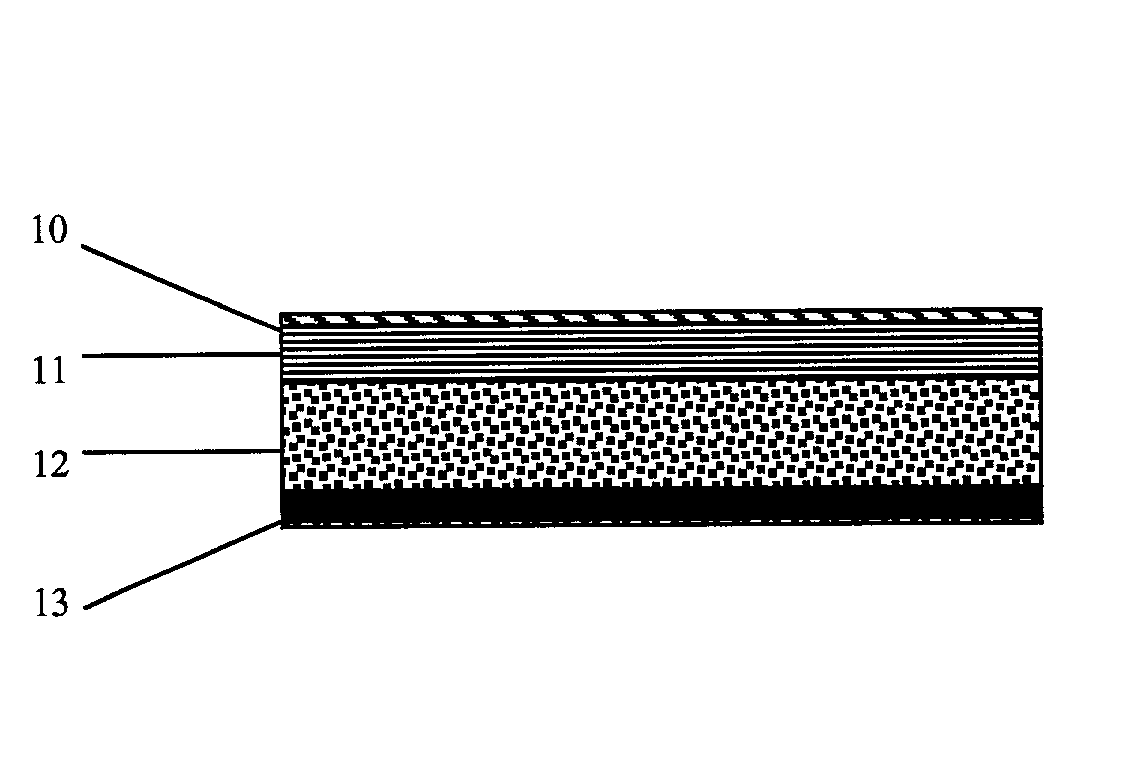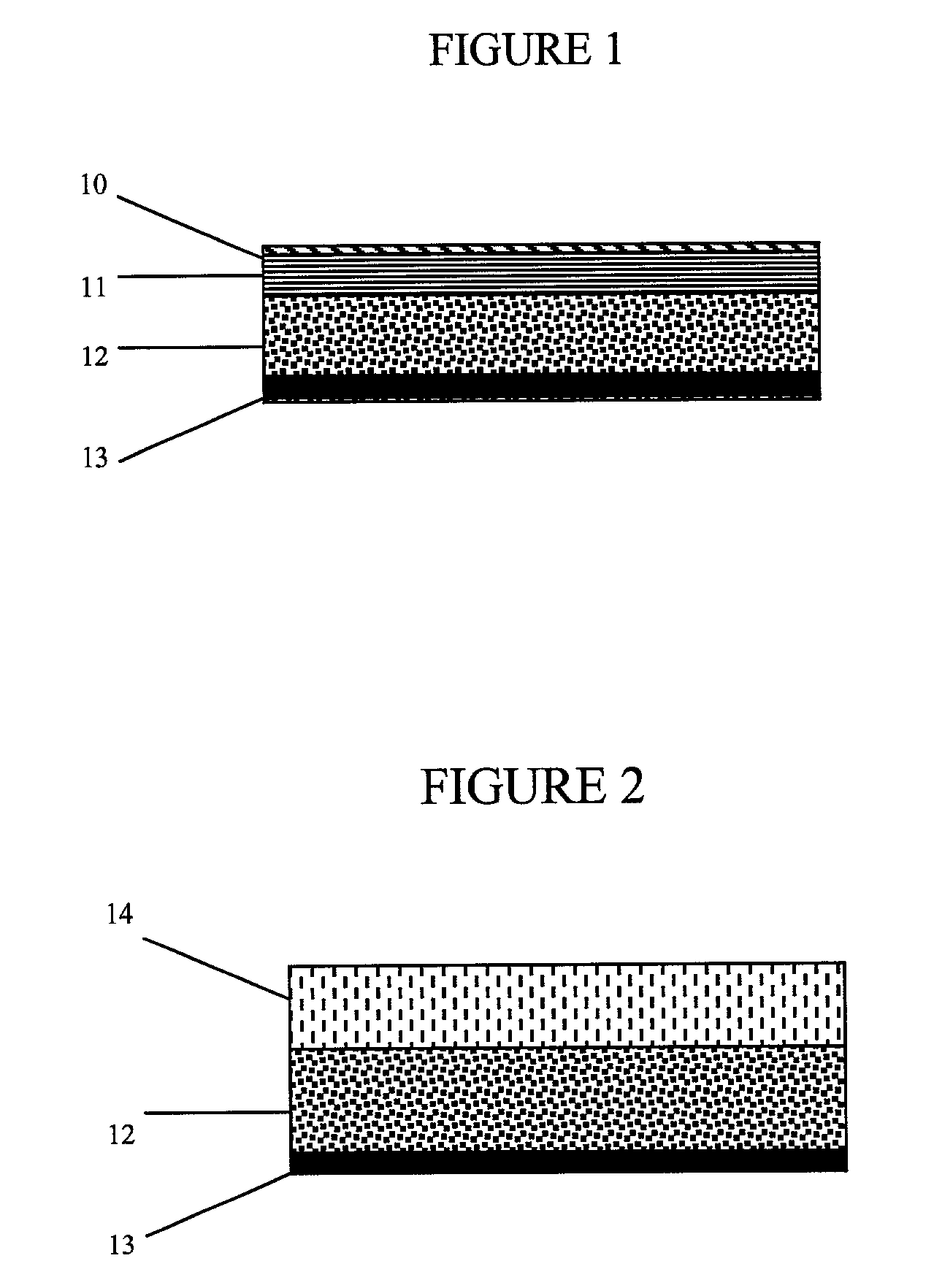Method for controlling noisome decomposition byproducts from human efflux retained in personal hygiene products
a technology of decomposition byproducts and personal hygiene products, which is applied in the field of control of odors resulting from the decomposition of human efflux, can solve the problems of odor development, limited effectiveness of decomposition of those wastes into volatile byproducts, and failure to achieve prior attempts to control ammonia odors
- Summary
- Abstract
- Description
- Claims
- Application Information
AI Technical Summary
Benefits of technology
Problems solved by technology
Method used
Image
Examples
example 1
[0025] A 50 gram per square meter nonwoven fabric was fabricated from carded and thermally bonded staple fiber batt. The staple fiber used was a Type T-187 blue pigmented polypropylene polymer with a 1.5" staple length and a diameter of 12 dpf, as supplied by Fibervisions of Athens, Ga. The staple fiber was carded by conventional practice known to those skilled in the art and subsequently thermal bonded by use of a heated calender. A calender temperature of about 340.degree. F. and a nip pressure of 470 pounds per linear inch were employed.
example 2
[0026] The nonwoven fabric of Example 1 was subsequently treated with an odor control compound comprising 3 mM trichlorodiphenyl ether, supplied as "MICROBAN" from the Microban Corporation, 68 mM hexanedioic acid, and deionized water. A Weko Atomizer was used to uniformly distribute the odor control compound to the nonwoven fabric at an add-on level of 15% by weight.
[0027] Table 1 presents the effect of untreated and treated nonwoven fabric on bacterial growth. One inch square samples of Example 1 and Example 2 were placed on uniform bacterial lawns, then incubated overnight. Individually tested bacterial organisms where unable to live under the conditions imposed by the treated nonwoven material whereas the untreated material had no effect.
[0028] Table 2 is a variation of the zone of inhibition test performance given in Table 1. A test was performed whereby a bacterial broth receives a one inch sample of either Example 1 or Example 2, then allowed to incubate overnight. When compar...
PUM
| Property | Measurement | Unit |
|---|---|---|
| temperature | aaaaa | aaaaa |
| volume | aaaaa | aaaaa |
| acidic | aaaaa | aaaaa |
Abstract
Description
Claims
Application Information
 Login to View More
Login to View More - R&D
- Intellectual Property
- Life Sciences
- Materials
- Tech Scout
- Unparalleled Data Quality
- Higher Quality Content
- 60% Fewer Hallucinations
Browse by: Latest US Patents, China's latest patents, Technical Efficacy Thesaurus, Application Domain, Technology Topic, Popular Technical Reports.
© 2025 PatSnap. All rights reserved.Legal|Privacy policy|Modern Slavery Act Transparency Statement|Sitemap|About US| Contact US: help@patsnap.com



